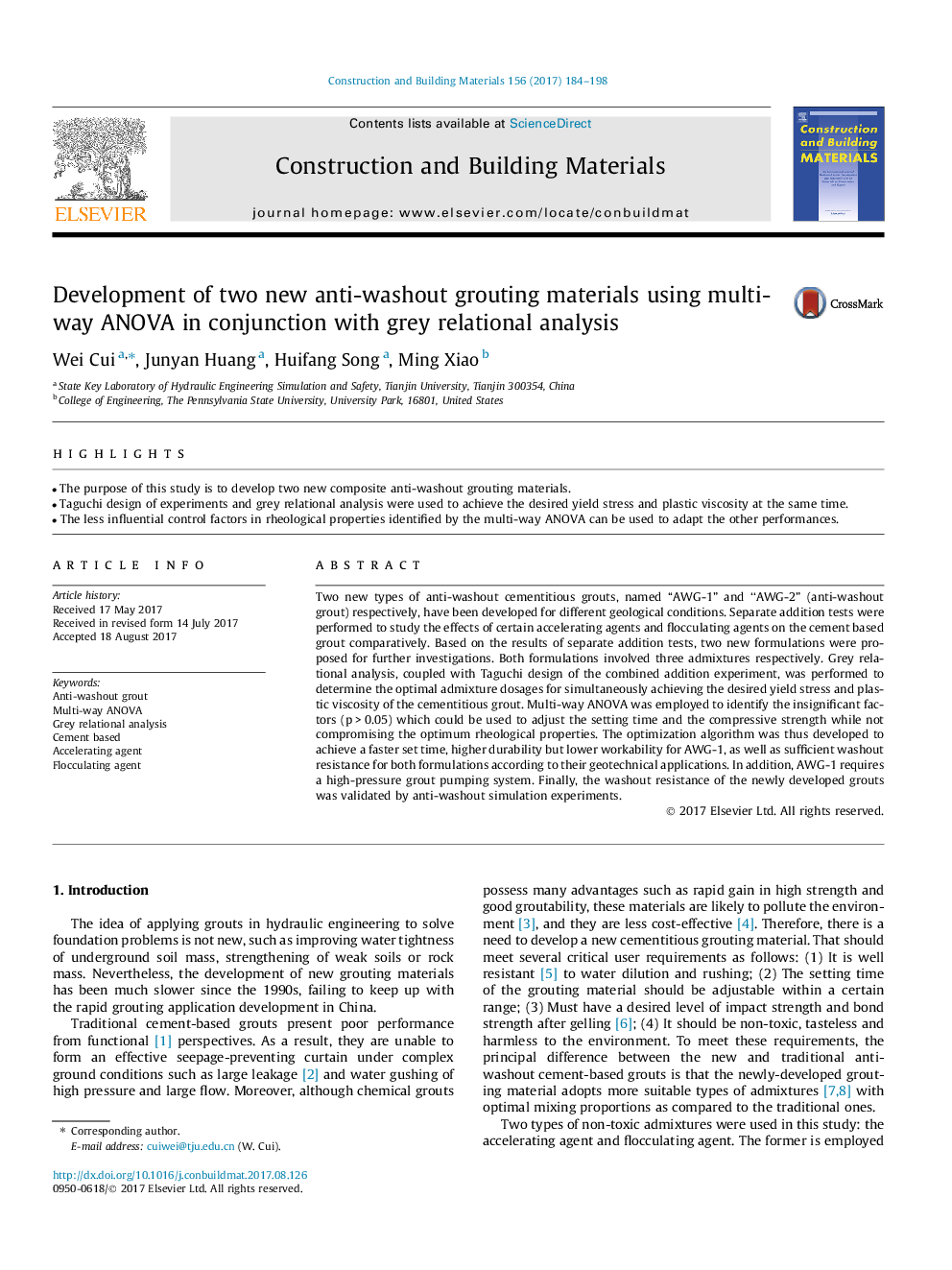| Article ID | Journal | Published Year | Pages | File Type |
|---|---|---|---|---|
| 4912658 | Construction and Building Materials | 2017 | 15 Pages |
Abstract
Two new types of anti-washout cementitious grouts, named “AWG-1” and “AWG-2” (anti-washout grout) respectively, have been developed for different geological conditions. Separate addition tests were performed to study the effects of certain accelerating agents and flocculating agents on the cement based grout comparatively. Based on the results of separate addition tests, two new formulations were proposed for further investigations. Both formulations involved three admixtures respectively. Grey relational analysis, coupled with Taguchi design of the combined addition experiment, was performed to determine the optimal admixture dosages for simultaneously achieving the desired yield stress and plastic viscosity of the cementitious grout. Multi-way ANOVA was employed to identify the insignificant factors (p > 0.05) which could be used to adjust the setting time and the compressive strength while not compromising the optimum rheological properties. The optimization algorithm was thus developed to achieve a faster set time, higher durability but lower workability for AWG-1, as well as sufficient washout resistance for both formulations according to their geotechnical applications. In addition, AWG-1 requires a high-pressure grout pumping system. Finally, the washout resistance of the newly developed grouts was validated by anti-washout simulation experiments.
Keywords
Related Topics
Physical Sciences and Engineering
Engineering
Civil and Structural Engineering
Authors
Wei Cui, Junyan Huang, Huifang Song, Ming Xiao,
